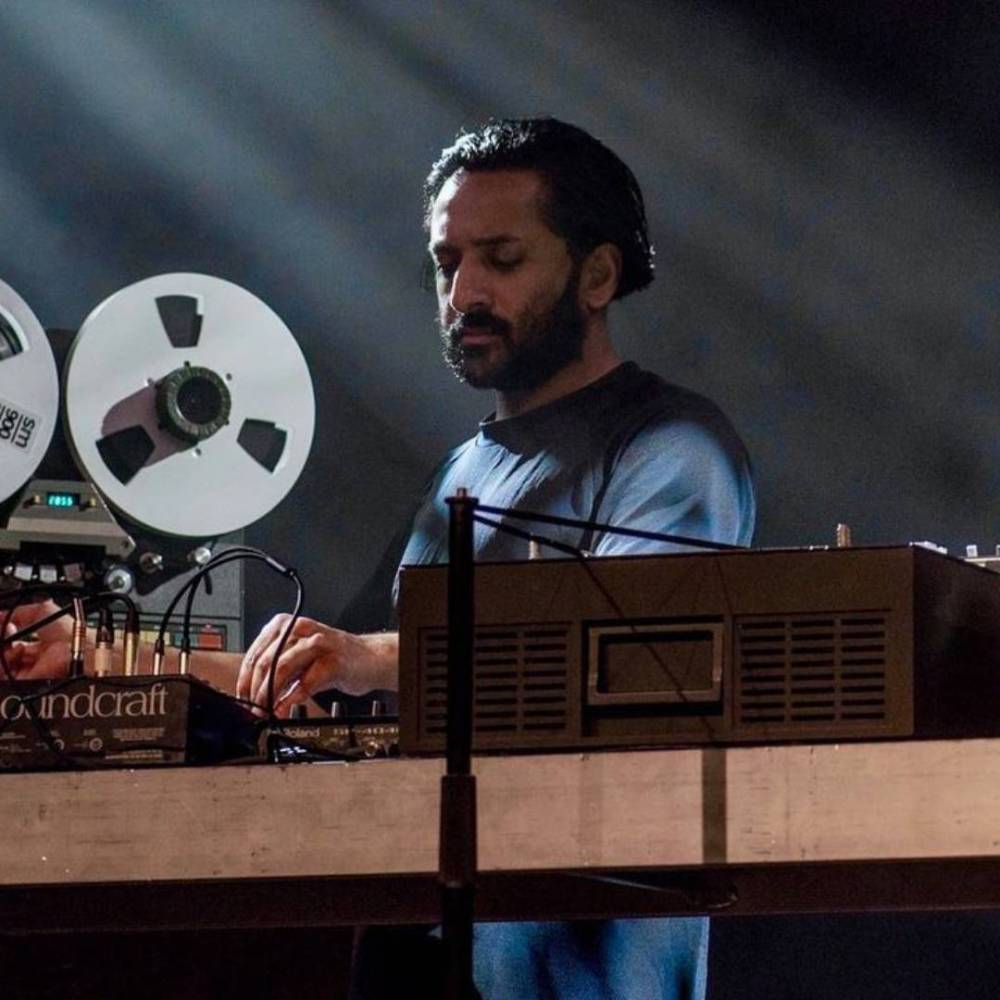Image via Pete Woodhead
Michael McKinney understands the cultural importance of Kreayshawn’s “Gucci Gucci.”
Spend enough time exploring any given culture and narratives will start to solidify. Dub emerged from Kingston’s soundsystem culture, grunge was first heard in dingy Seattle clubs, and Soweto gave birth to kwaito. But stories turn to spiderwebs, wrapping around each other and eventually taking forms that would be hardly imaginable at their genesis. Dub fed into dubstep, which itself birthed a million scenes and styles; every artistic movement has more big bangs than you can reasonably catalog. “Electronic music,” in as much as it is a unified scene, has critical regional hubs from all over the world: London and Lisbon, Ibiza and Durban, Baltimore and Berlin. But histories have a way of disappearing. Cassettes get discarded, vintage synthesizers collect dust, and narratives are simplified for the sake of straightforward description.
Paul Purgas has built a career upon questioning conventional histories. Again and again, he peels layers back and finds forgotten worlds. This interest in intersecting histories makes sense: he grew up in Bristol, a city with all sorts of tangled musical roots: punk, drum-and-bass, hardcore, industrial music. (As half of Emptyset, he has been pushing a cragged and dissonant vision of techno for over a decade.) Purgas studied architecture in university, and his solo practice reflects this. He is concerned with how sound occupies spaces, and how narratives and histories twist around each other to build sturdy foundations and false floors.
His latest project, which he has been exploring since 2017, is one of his most complex yet. Six years ago, he got in touch with the National Institute of Design in Ahmedabad, a multidisciplinary arts and design university in India. What started as an investigation into a synthesizer owned by David Tudor evolved into a historical excavation: Purgas came upon a box of cassettes containing electronic-music experiments recorded at the institute between 1969 and 1972. At that time, India was going through a reckoning with the legacy of a post-colonial existence, and the NID was exploring what Purgas calls a “utopian” vision for the future. Tablas, tanpuras, and modular synthesizers were all cut from the same cloth. Filmmaking, Hindi poetry, and John Cage were blurred into one. For a split second, anything was possible.
The NID Tapes: Electronic Music from India 1969-1972, a compilation that explores the sonic output of the Institute, is one of Purgas’s many avenues into this material. In 2020, he produced a radio documentary for the BBC, entitled Electronic India, and later this year, The MIT Press will release Subcontinental Synthesis, a series of essays on writings on the history and legacy of these recordings. This multifaceted exploration of the archives only underlines how singular they are: these recordings represent a moment in electronic music that is vanishingly brief but wildly exciting. In these tracks, you can hear all sorts of possible futures: proto-proto-techno and tape reels stretched into increasingly byzantine forms. A school of design turned in a vision of electronic music that, no matter how hermetic, suggested infinities. These recordings fit alongside all sorts of sonic histories, even as they sit outside of any of them.
In advance of the release of The NID Tapes, we had a chance to speak with Paul Purgas, digging into how he came to find these tapes, his ideological approach to design and sonic architectures, his relationship to the contemporary British-Asian electronic-music scene, the temporal nature of reel-to-reel tapes, and plenty more.
(This interview has been condensed and lightly edited for clarity.)
That strand evolved into the exhibition program, We Found Our Own Reality, which is a touring exhibition that contextualizes the tapes within an architectural design ethos, framing it within the pedagogy that was operating in the NID at that moment. That has been presented in the UK, and at CTM Festival in Berlin.
Alongside that, though, there was also the process of making it into an album—The NID Tapes LP. That’s another way of navigating the archives, this time more from a listening perspective. This is more about narrating a way through 30 hours of audio into something that makes sense as a listening experience, where you’d sit down to journey through the archive. That was a subsequent project.
I’m trying to think about other strategies: as I sit with the archive more and more, I’m sure more ways of navigating it, and other types of storytelling, might emerge from it. It’s a fascinatingly broad connection of material. A lot of that critical thinking has emerged into the book, Subcontinental Synthesis, which is coming out in the autumn: bringing other voices and theorists to evaluate their response to the archive; thinking through its cultural resonances; and how that moment can be interpreted from multiple perspectives.
Image via Keith Hunter
With the installation, there was the potential to think about different frequency responses, different ways of spatializing sound; the notions of musicality felt like less of a requirement. We were thus more able to think about it from a more sonic perspective. We could think about, for example, the use of language in the NID tape archives: there’s other additional material, too, like talks and lectures that were recorded at the NID around the same time. The exhibition contains a recording of the Indian spiritual philosopher Jiddu Krishnamurti. I found a lecture by him on one of the tapes at the NID.
So there was a chance to bring in elements that didn’t necessarily fall within the paradigm of the tapes themselves; they were contextual material that sat around and helped to tell an expanded version of the story. That was accompanied by field recordings that were made on-site at the NID, which helped capture the environment of the space and offer that context.

